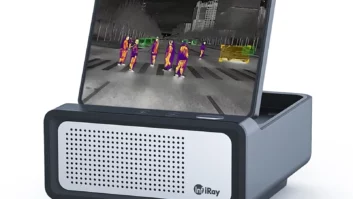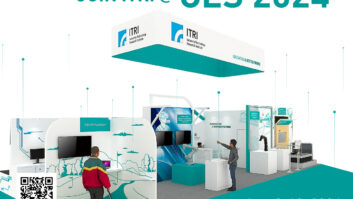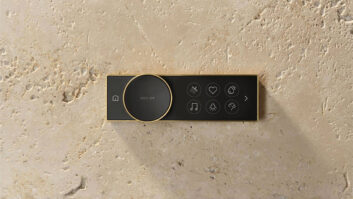Las Vegas – The popularity of 3D photography may soon get a boost
from a new 3D camera and photofinishing processor being marketed here by Hong
Kong-based LO3D.
The unique 3D system includes a three-lens (six-lenses in a professional
version) point-and-shoot digital camera, an 8-inch glasses-free 3D digital
photo frame and an all-in-one photofinishing processor. The processor, which is
intended for photo labs, will produce lenticular 3D prints for both LO3D’s camera
as well as traditional two-lens 3D cameras. It will also perform conventional
2D photo processing.
Digital photos from the 3D cameras can be played back on 3DTVs
and 3D photo frames by taking images from just two lenses. But LO3D’s hard copy
photos give the system its extra dimension.
The LO3D photo processor uses traditional chemicals, but LO3D has
developed a special printing paper to produce images from its three- and
six-lens cameras.
The developing process is said to be very easy and fast.
The LO3D paper uses a lenticular plastic that is part of the
media, eliminating the need to laminate the back as occurs with more
traditional lenticular printing methods.
William Fu, LO3D director, said the three-lens approach offers a
center view to the left-and-right side angles to give photos a more natural 3D
effect, while the specially developed lenticular paper produces a true HD 3D image
that is cost effective.
Images have a more
pronounced sense of animated movement when shifting between viewing angels in
the hand.
The non-laminated optical 3D paper is coated with color emulsion,
offers 100 percent matching of the lenticular screen and the composite image
sheet uses super high-resolution lenticules and super thin material.
Other 3D photo printing processes require laminating a computer
interlaced composite image sheet to a lenticular screen with glue or heat. This
can create distortion, a low resolution image and is time consuming and
unreliable, LO3D said.
The technology was originally developed by Allen Lo, the founder
of the L03D consortium that pioneered the technique. Nimsio Corp. first
developed the system in 1980.
The LO3D company is now negotiating to license the technology to
other manufacturers, in addition to marketing its products through retailers, and
photofinishing labs.
Fu said 3D prints will give photo finishers an additional profit
opportunity, as will the cameras.
He said LO3D is encouraging labs to purchase and sell cameras to
support the LO3D photofinishing business in the early stages. But LO3D is also
courting traditional camera, electronics and drug store retailers to carry the
hardware.
The all-in-one processor will sell for $75,000. The three-lens 3D
camera will be sold as part of a kit with the 8-inch digital photo frame for a
$300 suggested retail.
The camera comes with 12GBs of internal memory, and a miniSD card
slot. Images are captured with three lenses and three high resolution image
processors.
Fu said he expects the first products to hit retail in the United
States in about three months.
In addition to selling LO3D processors, the company is offering
its own photofinishing services to those who may not live in the vicinity of a
LO3D equipped lab. The company will launch a website shortly, company
representatives said.













